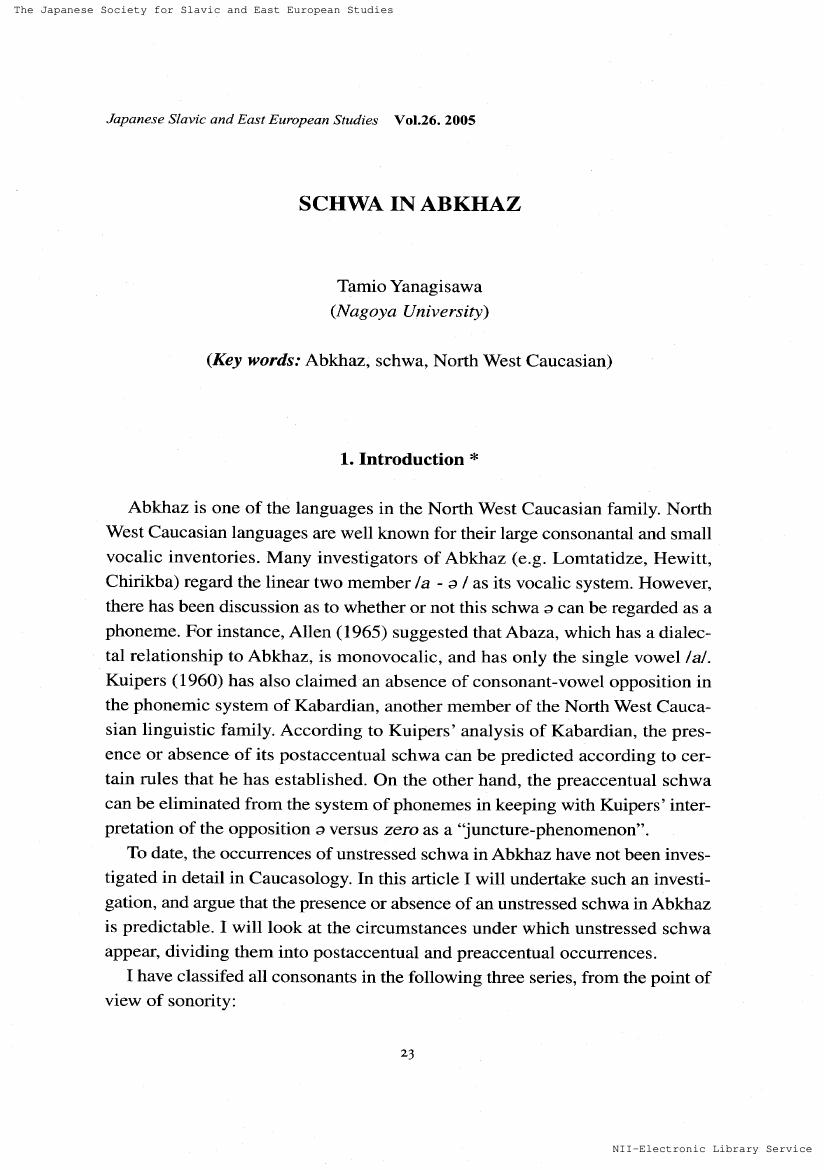2 0 0 0 OA SCHWA IN ABKHAZ
- 著者
- Tamio Yanagisawa
- 出版者
- The Japan Association for Russian and East European Studies
- 雑誌
- Japanese Slavic and East European Studies (ISSN:03891186)
- 巻号頁・発行日
- vol.26, pp.23-36, 2005 (Released:2019-11-14)
- 被引用文献数
- 1
- 著者
- Bogdan Pavliy Jonathan Lewis
- 出版者
- The Japan Association for Russian and East European Studies
- 雑誌
- Japanese Slavic and East European Studies (ISSN:03891186)
- 巻号頁・発行日
- vol.36, pp.77-97, 2015 (Released:2019-08-09)
- 参考文献数
- 48
- 被引用文献数
- 1 1
The ongoing controversy regarding Ukraine’s language laws has highlighted the need for empirical research on language use in the country. Election and census results show that the country has two internal north-south borders: an electoral fault line that runs northeast to southwest along the eastern borders of Poltava and Kirovohrad oblasts (regions), and a linguistic border based on self-reported mother tongue that divides Luhansk, Donetsk, and Crimea from the rest of the country. This article uses data from the microblogging service Twitter to analyze the geography of language in Ukraine. Based on a dataset of 2.4 million geotagged tweets collected over four months in 2015, we found that online language use largely reflects the country’s internal electoral border. In addition, we found widely different rates of bilingual communication: whereas more than half of those using Ukrainian also tweeted in Russian, fewer than one in ten of those using Russian also tweeted in Ukrainian. Use of both languages was higher in urban areas for both groups.
- 著者
- Іван Бондаренко
- 出版者
- The Japan Association for Russian and East European Studies
- 雑誌
- Japanese Slavic and East European Studies (ISSN:03891186)
- 巻号頁・発行日
- vol.41, pp.42-47, 2021 (Released:2021-06-12)
1 0 0 0 OA Big Tokyo (1933) and the Ideology of Sound
- 著者
- Anastasia Fedorova
- 出版者
- The Japan Association for Russian and East European Studies
- 雑誌
- Japanese Slavic and East European Studies (ISSN:03891186)
- 巻号頁・発行日
- vol.35, pp.103-127, 2014 (Released:2019-08-09)
- 参考文献数
- 44


